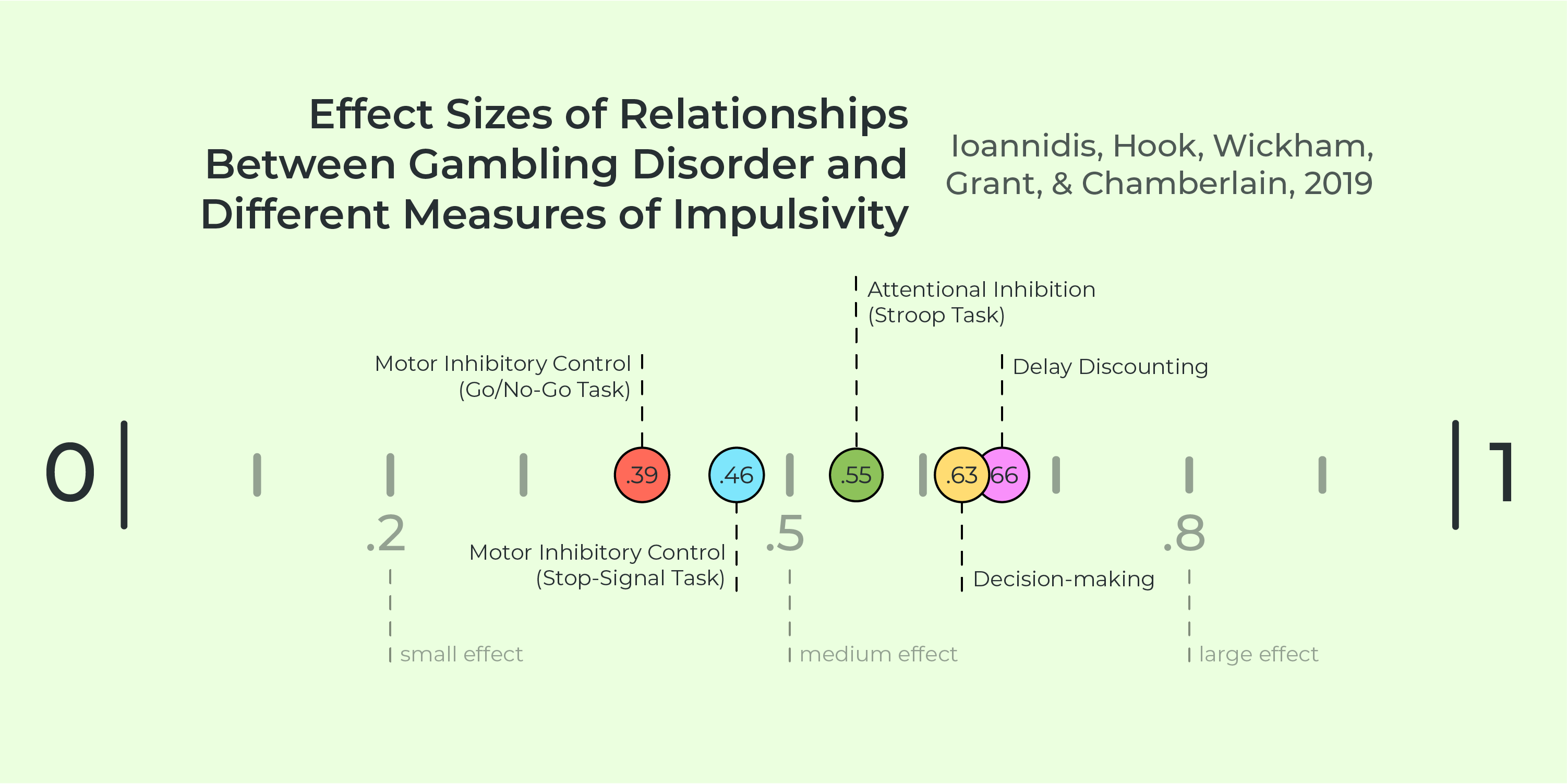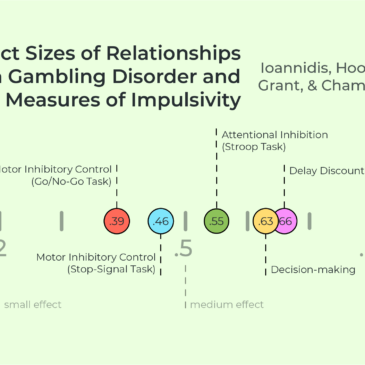We often assume that individuals with Gambling Disorder have trouble regulating their impulsive behavior. However, impulsivity is a multi-faceted skill, and we don’t know what specific parts of impulsivity might be impaired in Gambling Disorder or whether these impairments extend to people who struggle to manage their gambling but don’t meet diagnostic criteria for Gambling Disorder (i.e., people with problem gambling). This week, The WAGER reviews a meta-analysis by Konstantinos Ioannidis and colleagues investigating the relationship between various domains of impulsivity and Gambling Disorder.
What was the research question?
Are Gambling Disorder and problem gambling related to dysfunctions in the cognitive domains that regulate impulsiveness?
What did the researchers do?
Ioannidis and colleagues completed a meta-analysis of case-control studies examining the relationship between Gambling Disorder/problem gambling and impulsivity published from 1987 to 2018.1 After excluding studies that did not meet criteria for the meta-analysis, they extracted data from 52 peer-reviewed published studies on 5 domains of impulsivity: attentional inhibition (being able to suppress one’s attention toward features of a task that are not relevant, often measured with the Stroop task), motor inhibition control (being able to suppress behaviors that are not relevant to the task at hand, often measured with the Stop Signal Task or the Go/No Go task), delay discounting (preferring immediate rewards over larger delayed rewards), decision-making (insensitivity to future consequences, often measured with the Iowa Gambling Task), and reflection impulsivity (making decisions where the outcome is uncertain without much thought).
What did they find?
Gambling Disorder was significantly associated with four of the domains (See Figure). The researchers found the strongest effects for delay discounting, decision making, and attentional inhibition. They found smaller effects for both kinds of motor inhibition control. They didn’t have enough data to study reflection impulsivity. For problem gambling, there was only enough data to study decision making–and the results revealed a significant impairment relative to controls (Hedge’s g = 0.66).

Figure. Effect sizes for the relationship between Gambling Disorder and four different domains of impulsivity. Note: Effect sizes are expressed as Hedge’s g. A Hedge’s g of 0.2 indicates a small difference between the two groups (in this case, Gambling Disorder vs. control participants), while a g of 0.5 indicates a medium difference and a g of 0.8 indicates a large difference. Click image to enlarge.
Why do these findings matter?
Most of us, whether or not we have a psychiatric degree, associate Gambling Disorder with impulsivity and lack of inhibition, and this is a central theory in neurobiological models of Gambling Disorder. Ioannidis and colleagues wanted to test this assumption across different studies. This meta-analysis implicates impulsivity and dysregulation of related cognitive pathways in the typical profile of disordered gambling. These deficits could act as potential markers in individuals for susceptibility to disordered gambling.
Every study has limitations. What are the limitations of this study?
Although the dysfunction in inhibition responses was found across multiple studies, it is not possible to determine if these impulsive tendencies came before or after participants were diagnosed with Gambling Disorder. Many of the studies included in this meta-analysis did not assess for impulse control disorders which might be a mediator between dysfunction in inhibition response and gambling disorder.
For more information:
Do you think you or someone you know has a gambling problem? Visit The BASIS Addiction Resources page for gambling screens and self-help tools.
— Karen Amichia
What do you think? Please use the comment link below to provide feedback on this article.
________________
1. Ioannidis and colleagues registered their protocol using the open science website PROSPERO. View their preregistration here: https://www.crd.york.ac.uk/prospero/display_record.php?RecordID=105900&RecordID=105900




